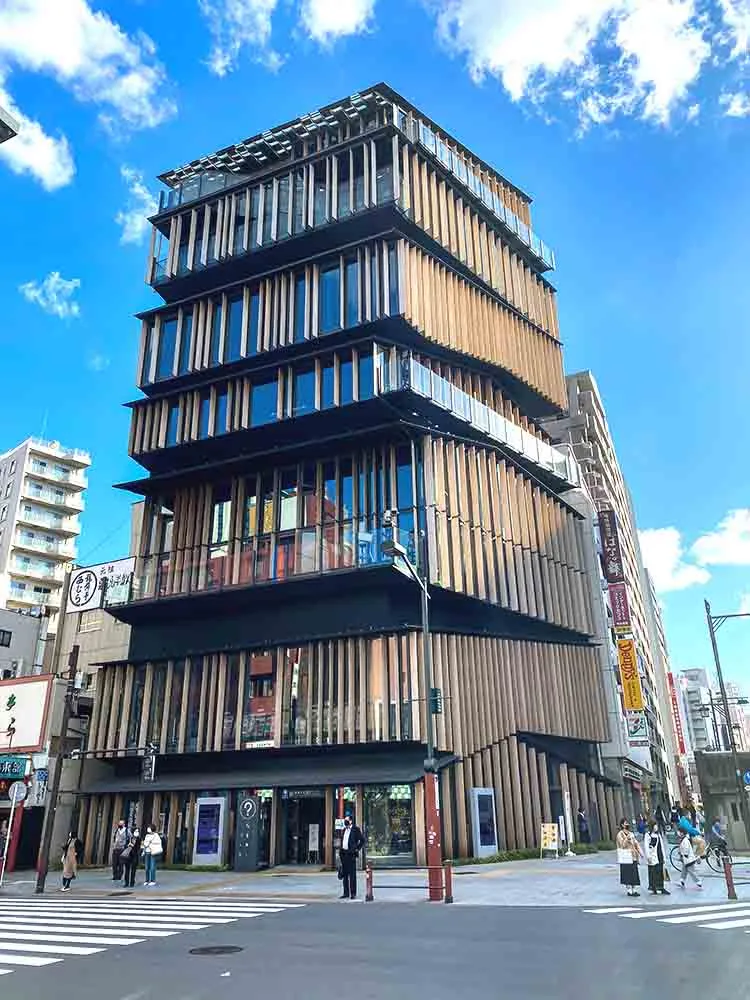The Asakusa Cultural and Tourism Center designed by Kengo Kuma
Kengo Kuma is probably one of the few contemporary Japanese architects that expressly pursue Japanese-ness in his/her works. He often uses natural materials such as wood in the spirit of traditional Japanese architecture, which knew how to turn seemingly unfavorable qualities of natural materials such as subtlety, delicacy, or weakness into beauty such as softness, transparency or flexibility/editability.
It that sense, it was fitting that he designed the Asakusa Culture and Tourism Center, which is located right in front of the Senso-ji and Nakamise Shopping Street, one of Tokyo’s most touristic areas for its Edo-era (1603-1868) architecture, heritages and atmosphere.

Before modernization, Tokyo was called Edo, and Edo was one of the largest cities by 1800 even without the Industrial Revolution. As properties were very high in demand, ordinary people lived in “nagaya (long house),” single-story wooden, narrow multiplexes divided into small units in order to accommodate many families in one building. Rows and rows of nagaya filled narrow streets after streets, creating lively communities that fostered vibrant culture of people. Ukyo-e, one of the most popular Edo cultures, vividly captured people’s lives back then.
Kuma thought about nagaya when he designed Asakusa Tourism Center because it was what made people’s Edo, which is at the heart of Asakusa heritage. But as the center had be built on a small piece of land, he chose to stack single-story Edo-style houses on top of each other.


Each floor represents a wooden house with a unique shape. And as each roof is slanted and have deep eaves as traditional Japanese houses, stacking of them created asymmetric triangular voids between floors. Kuma installed/stored equipment using those spaces. “We are too used to the idea that the floors have to be flat, but I hope I was able to inspire people to re-think the relationships of buildings and floors,” Kuma says.
A nagaya-inspired building must leverage wood, you’d almost think. But wood hasn’t been a to-go material, especially for exteriors, in modern construction due to the fire code – as a matter of fact, Edo had been notorious as a city prone to fire as it was full of wooden buildings. But as Kuma was demined to use wood not only for the interior but also the exterior, he processed it to enhance fire resistance. “Thanks to the emerging technology, you can cover the exterior of a building that is as high as 40 meters,” Kuma says. He chose Japanese cedar, which is the most commonly used wood species in Japan today.


You can enjoy coffee or beer at the cafe at the top of the building. See the Senso-ji and Nakamise street outside the window?
















